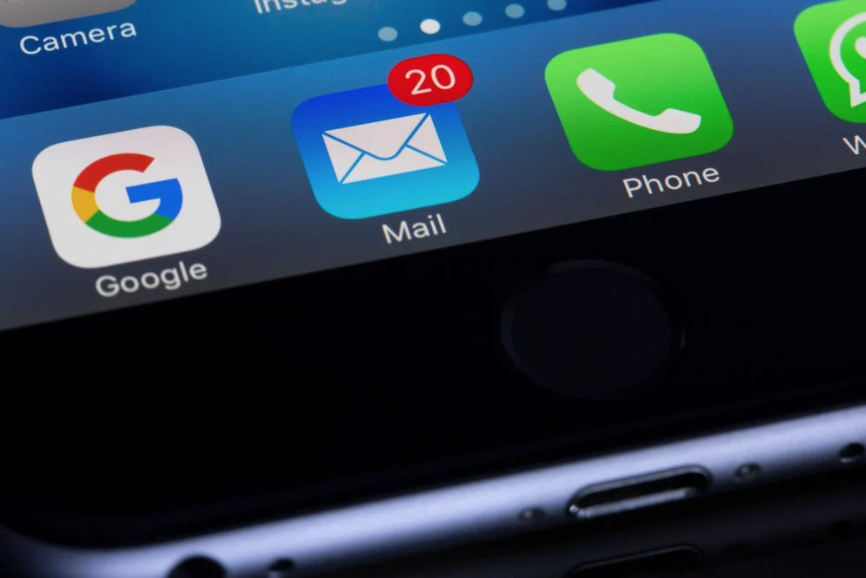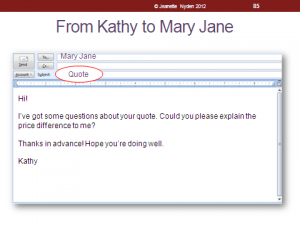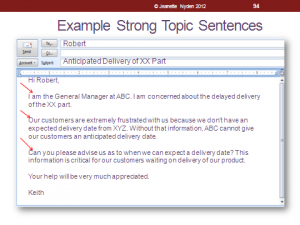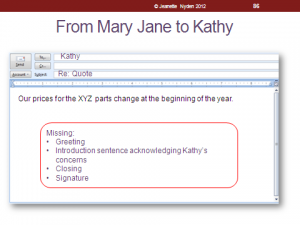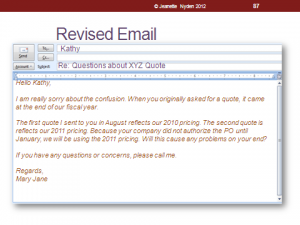We have a love hate relationship with email. We love instantaneously sharing information with people and being able to send all sorts of documents easily without cost. But, we also get spammed or deluged with irrelevant “reply all” responses.
We have the same love hate relationship with using email to negotiate deals. Sometimes we love how efficient email is. But, studies show, we lose more than 50% of our deals when we negotiate exclusively using email. Can you afford to lose your deal through email? Email negotiations are here to stay. We cannot go back in time, but we can improve our skills by applying five tips immediately.
- Email Has Limited Value to the Negotiator. Recognize that email messages are easily misunderstood and can create a cascading effect of communication problems with your counterpart. More than 90% of human communication is non-verbal—meaning tone of voice and facial expressions. All of that non-verbal communication is missing in an email exchange. Therefore, use the phone or face-to-face meetings in addition to email to make sure that you close the deal.
A manufacturer realized that their customer service representatives were using email almost exclusively when negotiating with customers. Some employees were successful in negotiating a resolution, others were not. As I read several employees’ email strings, I realized that the successful customer service representatives were also picking up the phone and walking around the plant to talk to people one-on-one. The key to their success was knowing when they had to use the phone or a start a face-to-face conversation.
2. Carefully Select Subject Lines. Subject lines are your first impression. They also help us keep track of long email strings. Use subject lines wisely. For example, instead of “Quote” use “Quote for 2012 ABC Part Including Warranty and Service Options” Not only does this make a great first impression because the reader can pick it out of the 100 emails she gets in one day, it conveys important information about the content in the email. Finally, don’t be afraid to change the subject lines to fit the body of your email. If you started with “3 points of consideration” and have only one point left, change the subject line to “Last point for consideration.”
In the following example, the buyer’s email got lost in the receivers inbox due to the vague email line.
Figure 1
3. Structure Your Email for Impact. Long, rambling emails will confuse the buyer. Time is at a premium these days. Clearly structure your emails to make it easy for the buyer to follow the back and forth negotiation process. For example, be sure to break topics up into bit sized pieces. Then talk about only one topic per paragraph. You may even want to number your paragraphs. In the example above, if you have “3 points for consideration” number the paragraphs so you can keep track of the agreements on each point.
In this example, the author of the email wrote strong topic sentences. It is easy for all the readers who got this email to skim the topic lines and still get a good understanding of the content of the email. It also helped my client escalate the issue to the right person.
Figure 2
4. Learn to Engage the Buyer in a Back-and-Forth Conversation. Negotiation is all about the conversation. It requires a lot of back-and-forth conversations to get to the final deal. Ask the buyer questions before dumping data or throwing out a proposal. People are notorious for sending back one sentence responses. That type of response could kill your deal. Add a question or two with your response. For example, if the buyer wants to know the 2011 pricing, tell her the pricing and ask a question, such as “what are your customers telling you about this year’s industry trends?” Get a conversation started that could help you learn about what the buyer thinks is important.
In this example, the author is literally answering the previous question, see figure 1, but she is also creating a problem by not engaging the author (and buyer) in a conversation.
Figure 3
What follows is my suggested revised email. It’s much more effective because it explains the reasoning, and it asks “Kathy” a question. Some sales people tell me that they don’t want to ask this question. But, here’s the cold reality. I also work with procurement professionals and if the sales people don’t engage them in a conversation, they may choose to work your competitor. Engaged negotiators are more successful at closing deals!
5. Make Effective Tradeoffs. A tradeoff is a mutual exchange of value. Times are tough; margins are tight and companies want more from your company. To balance all the competing demands with sound business judgment, make a tradeoff. Before you can make a tradeoff though, you have to know what you are willing to offer the customer and what you need from the customer in return to make it a mutual exchange. If you don’t know, take a minute to think about it. It could save you a lot of money in price concessions!
Email is here to stay as the preferred business communication tool. Learn to use email effectively by recognizing its limitations. People normally skim and scan email, so make it easy to skim your email and get the main talking points. Taking the small steps in this article will help you increase the odds of negotiating a great deal.
